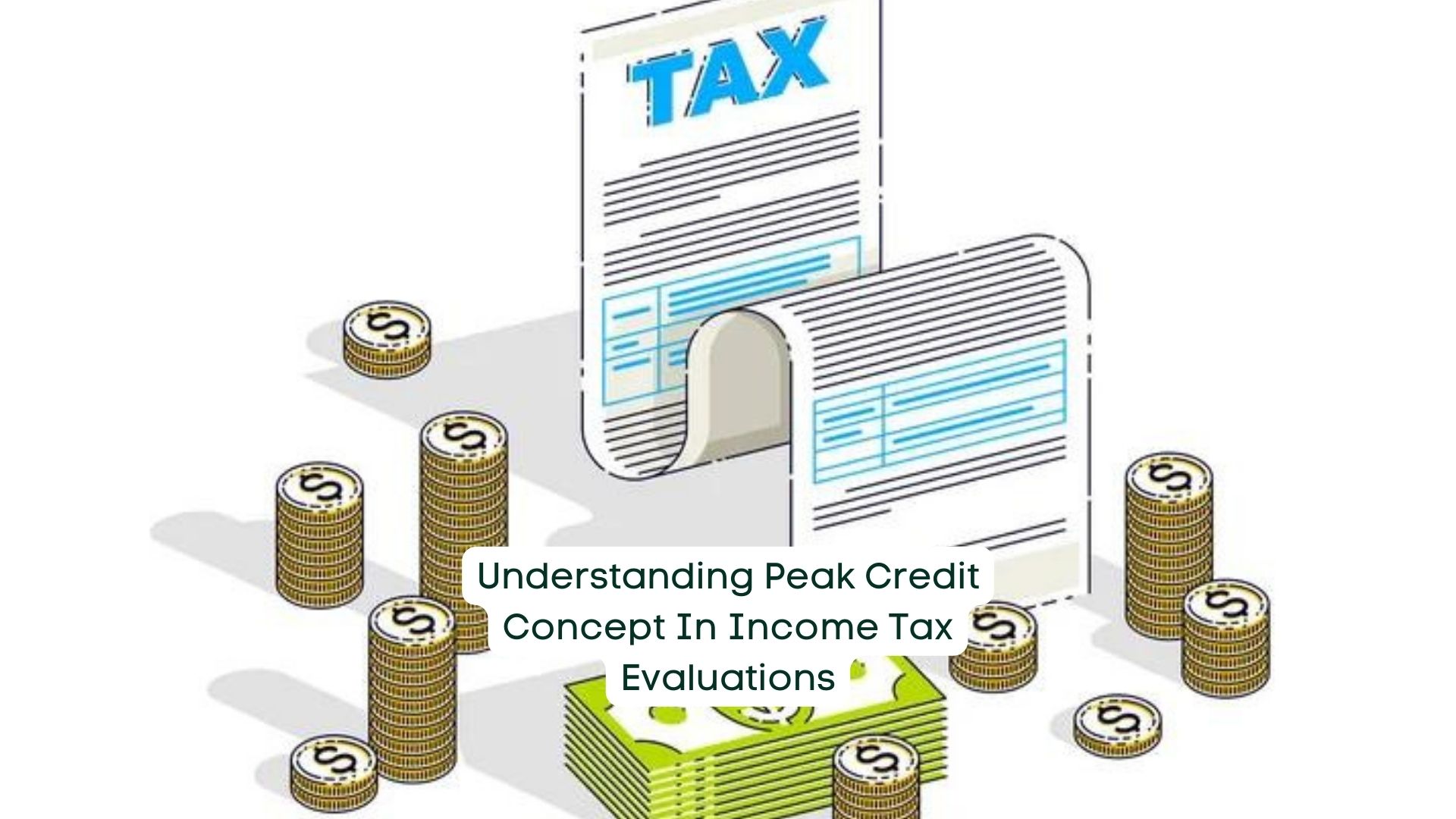
23 Feb Understanding Peak Credit Concept in Income Tax Evaluations

When the Assessment Officer (AO) encountered undisclosed cash receipts or deposits in the taxpayer’s bank account without satisfactory explanation, a common tactic was for the taxpayer to assert that these deposits originated from withdrawals noted in the same account or cash book. Section 68 of the Income Tax Act, 1961, treated the highest of such deposits as concealed income. Let’s delve into comprehending the Concept of Peak Credit in Income Tax Assessments.
Peak Credit Theory
In the realm of Income Tax assessment, taxpayers aimed to prevent the potential double counting of their income, offering only genuine income for tax purposes. The peak credit hypothesis came into play when there were numerous unexplained credit and debit entries. This theory was pertinent to fraudulent entries, as legitimate credits and debits offset each other unless circumstances indicated otherwise.
However, if the taxpayer admitted the genuineness of cash deposits, the advantage under peak credit theory was forfeited. [Reference: Bhaiyalal Shyam Behari vs. Income-Tax Commissioner (2006) 202 CTR All 515]
Moreover, if the AO could demonstrate that withdrawals were not meant for redeposit, the taxpayer could not claim the benefit under peak credit theory.
It was worth noting that the peak credit theory wasn’t confined to monetary credits received by the taxpayer. Unaccounted cash might infiltrate the books as cash credit or trade credit, both constituting deemed income for the taxpayer. If the taxpayer could establish that such credits were spurious, the peak credit theory applied to trade credits as well.
Determining Peak Credit
The computation of peak credit involved sequential steps:
- Listing all financial deposits and withdrawals deemed hidden in chronological order.
- Calculating balances for each deposit and withdrawal.
- The deposit in the initial entry became the closing balance for that entry.
- Subsequently, this closing balance served as the opening balance for the subsequent entry.
- Adjusting the deposit or withdrawal of the subsequent entry to the opening balance.
- Continuing this chain until the largest closing balance after adjustments determined the peak for the accounting period.
Adjustments to Peak Credit
After determining peak credit, the AO had to make certain adjustments:
- Opening balances: Deducting opening balances from peak credit.
- Past capital: Adjusting for established sources.
- Prior savings: If adequately evidenced.
- Recoveries from creditors: With proper documentation.
- Gifts: Adjusting based on documented evidence.
- Other transfers: Deducting known transfers.
- Contra-Entries: Accounting for contra-entries.
- Arithmetic errors: Rectifying computational errors.
- Correct entries: Considering only taxpayer-owned entries.
- Capital Receipts: Treating capital receipts separately.
- Rolling Profits: Awarding credit for profits used from unexplained sales.
- Available Bank Cash: Considering available cash for undisclosed transactions.
Conclusion
Peak credit denoted the highest undisclosed cash available. Under the peak credit concept, if withdrawn cash remained unspent, it might be deemed for deposits. Identifying peak credit enabled taxpayers to reduce taxable income. However, failure to verify the return of withdrawals to the account forfeited this advantage.


No Comments